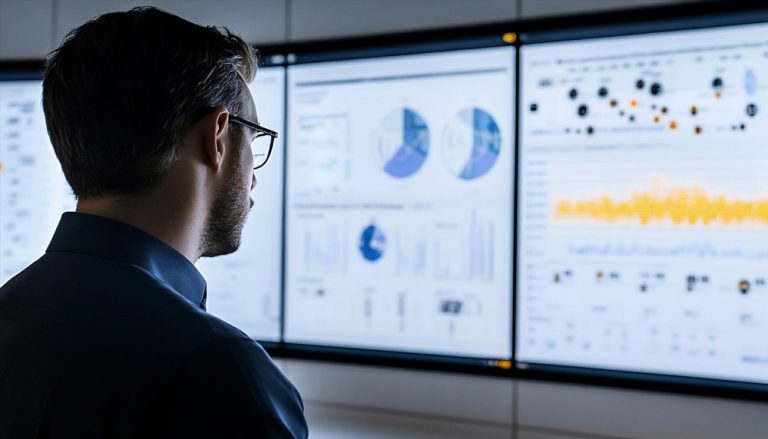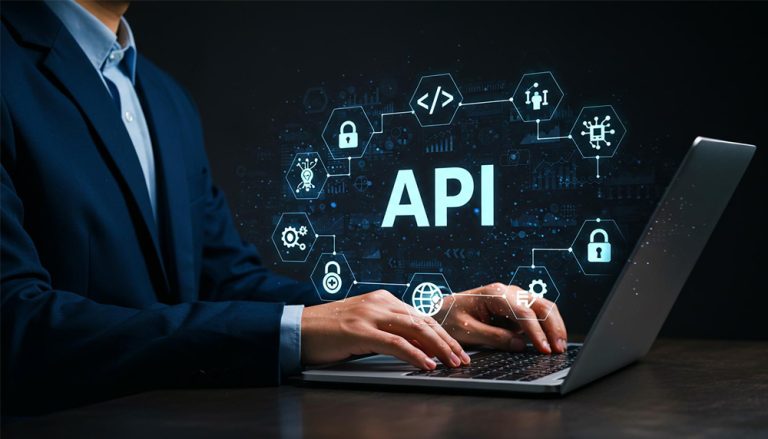
Last updated on February 1, 2025
Retail Intelligence Made Easy: Use Cases of Computer Vision and NLP To Grow Your Business
The retail landscape has undergone a digital transformation. The practices from the past where a customer simply browsed through the shelves or raised a question about the product have evolved due to the use of artificial intelligence helping retailers understand how to do better in the market. Computer Vision and Natural Language Processing (NLP) have greatly assisted in marketing by providing valuable information, turning any communication into valuable insight.
The Golden Age for Retail
The traditional way of gathering and analyzing data involving customer feedback, and relying solely on point of sales transactions, is now a thing of the past. With advanced and more powerful systems, the leading retailers can see, hear and interact with the physical world around them. According to a Gartner report, retailers incorporating AI using complex Computer Vision and NLP solutions are up to 23% more profitable all while cutting back their business expenses by 30% during the same time period.
Think of how Zara reinvented their stock and supplies with the help of advanced intelligence computer vision software. Their cameras are not simply security devices – they are used to examine product patterns or movements, consider the interaction with customers about the products and automatically create new orders when inventory runs low. This application has resulted in a 40% improvement in stock loss related issues while sales improved as a result of improved stock levels and proper positioning of sellers’ goods.
Understanding the Unspoken: NLP in Customer Experience
To understand the perception of consumers traditional marketing channels implemented modern-day sentiment analysis tools that are powered through NLP. In Target’s case the data driven approach proved useful, for instance, after integration of comprehensive NLP analytics, there were discoveries that were absent in older customer feedback, and this resulted to a 35% surge improvement in satisfaction ratings.
However, the shift in focus which information retrieval represents is much more interesting. This is true particularly in cases when all these technologies work together. When a product is grabbed by a customer and a question is asked about the product, for example, the product is grabbed first, then the vision module records the product while the query is being interpreted by NLP systems creating a synergy with respect to the level of customer understanding. This joined up intelligence enables retailers to respond to not only what the customers are saying but what they are doing.
Beyond Security: Computer Vision’s Evolution
Undoubtedly loss prevention will continue to be a prima facie, but the computer vision revolution has shifted dramatically. Smart retailers are using these systems to optimize store developments, assess the amount of traffic over time as well as the behavior of their customers. After Walmart integrated the analytics of computer vision, their understanding of how consumers move on their websites increased dramatically, and as a result, they were able to maximize performance by implementing tailored website templates that increased conversion rates by 28%.
There is also a positive trend regarding the impact on operations. Today’s most sophisticated computer vision applications are replacing human staff in updating inventory systems, ensuring compliance with shelf stocking requirements, and evaluating the quality of products in grocery areas. These use cases yield quick returns on investment while creating a blueprint for future use cases.
NLP on Their Advantage: Retail’s Language
People have come to understand Natural Language Processing as only an advanced form of chatbots. However, NLP systems today understand customer engagements on every single channel and provide guiding that seems to be intelligence-infused. They reveal the tone of the post on social media, the tenor of a customer’s conversation with a representative of the company, and the nature of the topics being talked about on the net or across forums.
In the study that proved the neural linguistic processing a valuable instrument in marketing, Home Depot was able to identify pertinent language patterns in customers’ emails and altered the way staff were trained and the manner they classified products. The outcome? What was once a customer who searched for a product for 3 visits vacated the store in one visit, with a successful first-time purchasing rate of 30%.
The Need for Integration
The integration of these technologies is where the real strength lies. When insights from computer vision are paired with NLP analytics, retailers are provided with a global view of their activities. This information enables better functioning of all aspects of the retail industry, such as making supply chain decisions and designing customer experiences.
Kroger’s story is a good example of this promise. They integrated computer vision and NLP systems into what they called “ambient intelligence” – which allows a setting to automatically respond to changes while also providing deep insights into a customer’s behavior and how well a business runs. The figures have been startling. Inventory accuracy improved by 40%, out-of-stock incidents dropped by 30% and customers’ satisfaction scores have improved significantly as well.
Preparing Retail Intelligence for the Future
At present, these technologies are in their infancy, and their potential has only begun to be scratched. Even said, the early adopters are already thinking into advanced uses like emotional recognition to optimize customer support services and predictive analytics to assist with demand planning. What works remains to be not just enacting these technologies to the business but developing adaptable frameworks that can comprehend these advances.
Blanco’s role begins with the necessary skills he possesses. We partner with organizations that possess knowledge of both retail processes and sophisticated AI tools so they can put into action measures that bring short term benefits and ensure the way for future development to take place. It is apparent that efficient implementation of solutions involves much more than just technical knowledge of the tools, but a comprehensive understanding of the retail processes and the business goals.
What Lies Ahead?
The retail market is probably one of the most rapidly developing sectors of the economy. Organizations that are able to exploit computer vision and NLP technologies in the most efficient way are not only going to “weather” this change, but also “lead” it. They will have better insights into who their target markets are, increase their operational efficiencies, and swiftly respond to shifts in the business environment.
The retail executives’ dilemma in this case is not about whether to spend on such technologies, but how best to apply them in such a way that there is a competitive edge that can be sustained. It is not enough to just keep on pouring money into advanced technologies; there is a need for a coherent plan that encompasses integrating these powerful assets into the business goals intending to preserve and enable future growth.
Are you ready to embrace the change and enhance how your retail business operates by leveraging visual computer and intelligent natural language processing capabilities? Let us start by discussing how these tools can add value to your business while ensuring that there is a strong base for future innovation in the highly competitive retail industry.






